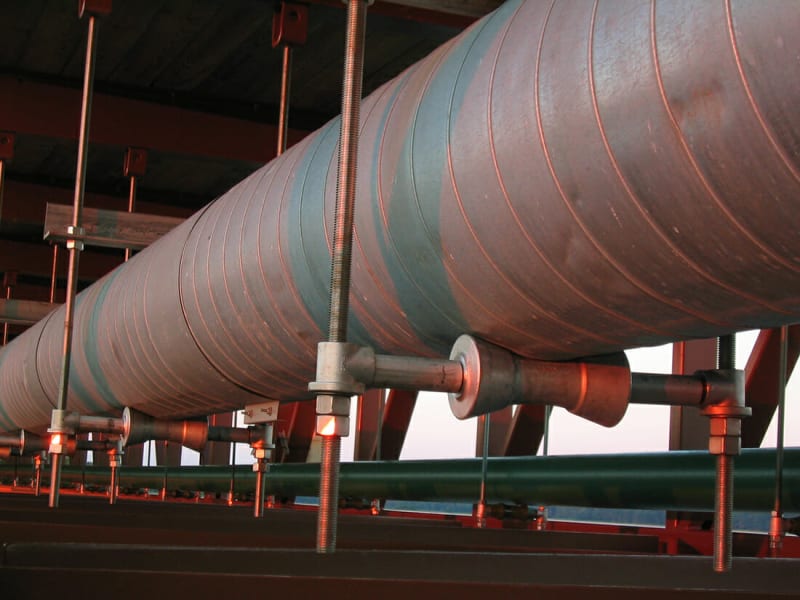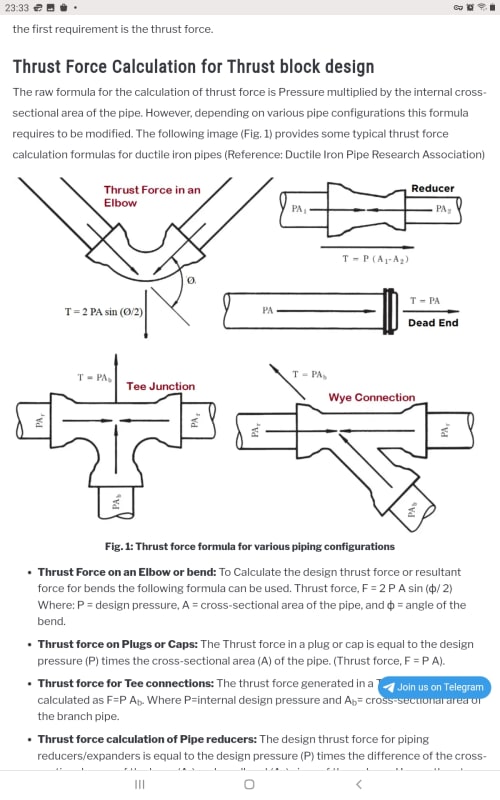I have a new 14" (ID) ductile iron potable water pipe hanging from the bridge structure. The pipe is approximately 600' long, relatively horizontal, working water pressure is 100 psi, 1500 gpm (max). The pipe will be installed in the snow country. I need to design thrust block for the pipe line. The thrust block system will be steel structural members that brace the pipe to the bridge structure. I see formula for the thrust block design for buried pipe but nothing on the pipe hanging from the bridge. Questions:
1. Can I still use the T = 2 P A (sin Q/2) equation to calculate the thrust force?
2. Is the Area of the pipe, inside or outside diameter of the pipe?
3. Is the water pressure A, actual working water pressure inside of the pipe (that is active 24 hours a day), or is it the pressure rating of the pipe material (350 psi), which is more than three times the actual working water pressure of 100 psi?
4. Any factor of safety I should consider for the thrust force calculations?
Thanks
1. Can I still use the T = 2 P A (sin Q/2) equation to calculate the thrust force?
2. Is the Area of the pipe, inside or outside diameter of the pipe?
3. Is the water pressure A, actual working water pressure inside of the pipe (that is active 24 hours a day), or is it the pressure rating of the pipe material (350 psi), which is more than three times the actual working water pressure of 100 psi?
4. Any factor of safety I should consider for the thrust force calculations?
Thanks


